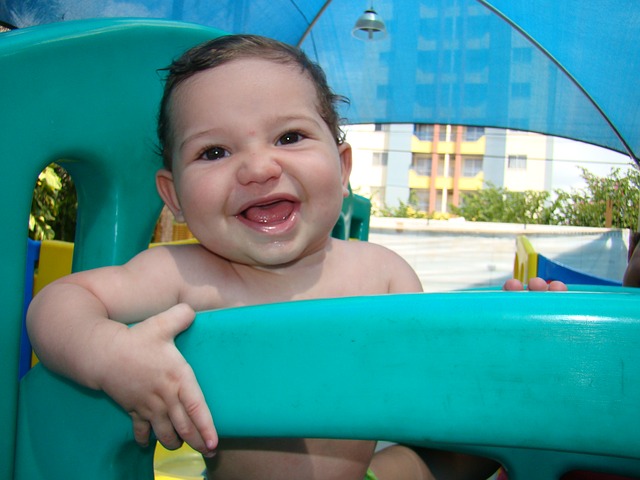Unconventional Parenting: Four Surprising Techniques That Can Help Raise Happy Kids
As parents, we’re always searching for the best ways to raise our children. However, some of the most effective parenting techniques may seem unconventional, even crazy. In this article, we’ll explore four such methods that might just surprise you.

Table of Contents
Teach Your Kids to Avoid the Word “No”
As a parent, you might have experienced your child saying ‘no’ to almost everything you ask them to do. This can be frustrating and may make you feel like you have lost control. But what if we told you that you could try a crazy parenting method where you never teach your kids to say the word ‘no’?
Now, this may sound like a difficult task, but it could have some benefits. By not saying ‘no’ to your child, you can create a positive environment where your child feels listened to and respected. Instead of saying ‘no’, you could try rephrasing your response to a request in a positive way. For instance, if your child wants to play with their toys instead of getting ready for bed, instead of saying “no, it’s time for bed” try saying “you can play with your toys tomorrow, but now it’s time for bed”. This way, you’re not shutting down their request and you’re still guiding them to the right behavior.
However, you may feel that it is important to teach your child that ‘no’ is a boundary and that there are certain things that are not allowed. In that case, you can limit using the word ‘no’ to big mistakes. For example, “no, you can’t touch the hot stove” or “no, you can’t run across the street without a grown-up”. This way, when you do say ‘no’, it will have more weight and significance to your child.
It is essential to understand that this method may not work for every child and every situation. Each child is unique and may require different approaches to learn and understand boundaries.
According to Dr. Laura Markham, a psychologist and parenting expert, “When we approach discipline as a collaborative process, we teach our children that we’re on their side, that we understand their perspective, and that we’ll help them find a way to meet both of our needs.”
In conclusion, teaching your child not to say ‘no’ could be a unique way to create a more positive and collaborative parenting experience. However, it’s essential to understand that it may not work for everyone, and each child requires a different approach to discipline.
Using Adult Language to Communicate with Your Child
It’s easy to fall into the habit of using baby talk with our little ones. However, talking to your child like a grown-up can actually have many benefits. Using proper vocabulary and grammar can aid in speech development and expand your child’s own vocabulary.
Additionally, children learn by imitation, so if you use baby talk, your child is likely to follow suit. Using adult language models proper communication and sets a good example for your child to follow.
But this doesn’t mean you need to speak to your child as if they were an adult. Use a simplified vocabulary and sentence structure, but still speak to them in a respectful and age-appropriate manner.
For example, instead of saying “Do you want some num-nums?”, say “Would you like something to eat?” It may take some practice, but it’s worth it to help your child develop proper language skills and communication habits.
Diaper-Free Potty Training: A Messy but Effective Method
Potty training can be a daunting task for any parent, but have you ever considered letting your baby go diaper-free? This approach, also known as “elimination communication,” involves relying on cues and signals from your baby to determine when they need to go to the bathroom. While it may sound crazy, many parents have had success with this method. By becoming attuned to your baby’s natural rhythms, you can effectively teach them how to communicate their needs and control their bodily functions.
Of course, elimination communication is not for everyone. It can be messy and time-consuming, and may not fit into everyone’s lifestyle. However, it’s worth considering as an option, especially if traditional potty training methods have not been successful.
If you do decide to try elimination communication, remember that it’s important to be patient and consistent. Start by watching your baby for signs that they need to go to the bathroom, such as grunting or squirming. Gradually, you can help your baby associate certain sounds or cues with going to the bathroom. Over time, they will learn to communicate their needs and control their bodily functions.
Elimination communication is not a one-size-fits-all solution, and it may not work for every family. However, for those who are willing to try it, it can be a gentle and effective way to teach your baby how to go to the bathroom. Just remember to be patient, consistent, and willing to adapt your approach as your baby grows and changes.
“Parenting is a tough gig, but with a little bit of creativity and a whole lot of love, you can help your kids grow up to be happy, healthy, and a little bit weird.”
Desperate times call for biting measures
Have you ever been at your wit’s end with your child’s bad behavior and wondered if there was a way to get them to stop? If so, you may be open to trying unconventional methods, like biting your child back when they bite you or others.
While this approach may seem extreme and controversial, it h犀利士
as worked for some parents. One mother had tried everything to get her daughter to stop biting, from giving her something else to bite to using orajel on her gums, but nothing seemed to work. In a moment of desperation, she bit her daughter back when she was bitten and it worked. Her daughter finally realized that biting hurts and stopped biting others.
Of course, many child experts and critics may argue that biting your child back is not a good way to discipline them, and there are certainly risks involved. However, for some parents, it may be a last resort to stop a harmful behavior.
If you do decide to try this method, it’s important to make sure your child understands why you are doing it and that it is not meant to be abusive. You should also make sure that biting is not the only form of discipline you use and that you provide positive reinforcement for good behavior.
“Raising kids is like a rollercoaster ride, but with more vomit and fewer seatbelts. Sometimes unconventional techniques can make all the difference!”
In conclusion, while biting your child back may not be the most conventional or widely accepted discipline method, it may be worth considering if other methods have failed. Just make sure to use it with caution and as a last resort.

